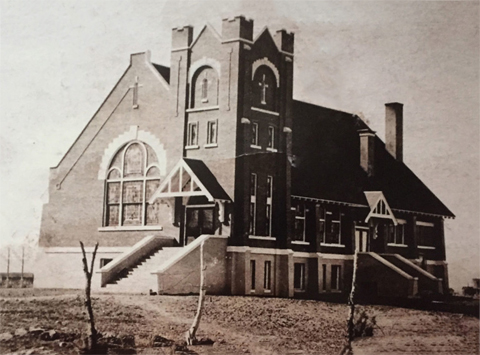By Nellie Sasser Gleed
Guy wanted to go hunting sage hens and I told him that I knew a spot where my Daddy used to kill them without firing a shot. He hit them with rocks and clods and cans while plowing in the field and in the deep furrows. He caught them with his bare hands.
“Well times have changed,” Guy said, but we got in the car and started to roll, over the hills to Holbrook and up over the cedar knoll past Petersons and Palmers to Bowens. There the road came to an end. That precious mile between Bowens and home was grown over with sagebrush and sand.
Back down over the knoll, past Thompsons, Masons, Burnetts, Grandpa Bowens and Bobbie Coe’s we sped right up to that 160 acres of land, Luther B. Sasser’s old homestead, and there it was, that hallowed spot–-that piece of God’s good earth that was chosen by my parents to homestead in 1909, the year of my birth.
They cleared the sagebrush and conquered the land and planted it in wheat. Dad built our home with his own hands and Mother kept it clean and neat.
But now this ground was barren again, gone back to our government good. The house and all the buildings were gone. Only the cement water tank stood, but it marked the spot where our home was built. There’s the hole where our cellar was. To the west I found rock foundations; the evidence strong and real that buildings had once been built there–-and here I had to pause.
I could visualize on one group of rocks placed with care by my father dear, the grainery where we stored our wheat at thrashing time each year. On the other rocks the ice house stood, filled with sawdust from the old saw mill. Here Father stored huge blocks of ice, cut and hauled from the pond in the winter still. As I looked I could see opening from the road, our gate–-where wagon and buggy and shay and car drove into the Sasser Estate. To the right still stands our gravel pile where we played. To the left stood the cistern tank and windmill tall, and at its side a slant-roofed house, our home, our haven of rest, a welcome place for all.
To the west of the lot stood the barn where Queen and Collie and Brownie were fed hay from the manger and grain from bags. They laid down on a soft straw bed where the chickens roosted and laid their eggs in the hay and the cows were fed and milked twice a day. The pig pens were there–-with the sow and her litter, and the big fat hogs grew bigger and bigger until Dad butchered them, cured the hams and bacon, and pickled the feet. Mother rendered the lard and made head cheese and sausage so all of us kids could eat and eat.
The last addition to the old homestead was built by Dad and called the machine shed. It housed the wagon and buggy and plow, all three, and later the tractor and our new model T.
Then I gazed at the land which was once a field of waving grain and I thought of my parents dear, and of my happy childhood again. Guy said, “Where are those fat sage hens?” And I thought, they are gone–gone with the wind and the rain, just like our house and sheds and fields–and we will never see them again.
So we lingered there until it was dark, leaning on the old cement tank and you should have heard what I said. I told Guy exactly how everything looked when I was a child. That day
he took me hunting on our old homestead.
